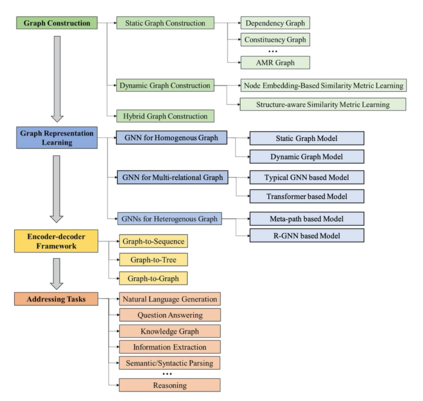Deep learning has become the dominant approach in coping with various tasks in Natural LanguageProcessing (NLP). Although text inputs are typically represented as a sequence of tokens, there isa rich variety of NLP problems that can be best expressed with a graph structure. As a result, thereis a surge of interests in developing new deep learning techniques on graphs for a large numberof NLP tasks. In this survey, we present a comprehensive overview onGraph Neural Networks(GNNs) for Natural Language Processing. We propose a new taxonomy of GNNs for NLP, whichsystematically organizes existing research of GNNs for NLP along three axes: graph construction,graph representation learning, and graph based encoder-decoder models. We further introducea large number of NLP applications that are exploiting the power of GNNs and summarize thecorresponding benchmark datasets, evaluation metrics, and open-source codes. Finally, we discussvarious outstanding challenges for making the full use of GNNs for NLP as well as future researchdirections. To the best of our knowledge, this is the first comprehensive overview of Graph NeuralNetworks for Natural Language Processing.
翻译:深度学习已成为处理自然语言处理(NLP)中各种任务的主要方法。虽然文本投入通常以一系列象征形式进行,但有多种多样的NLP问题,可以通过图表结构来最好地表达。因此,在为大量NLP任务开发图表上新的深学习技术方面,人们的兴趣激增。在本次调查中,我们全面概述了用于自然语言处理的Graph神经网络(GNNs) 。我们提出了用于NLP的GNNs新分类。我们建议对NLP的GNNs进行新的全球NNNS分类,按三个轴系统为NLP组织现有的GNNS研究:图形构造、绘图代表学习和基于图表的编码解码器模型。我们进一步引入大量NLP应用程序,这些应用程序正在利用GNNPs的力量,并概述了基准数据集、评价指标和开源代码。最后,我们讨论了在将GNNNNPs全面用于NLP以及未来研究方向方面的各种尚未解决的挑战。我们最全面的自然资源管理概览。







